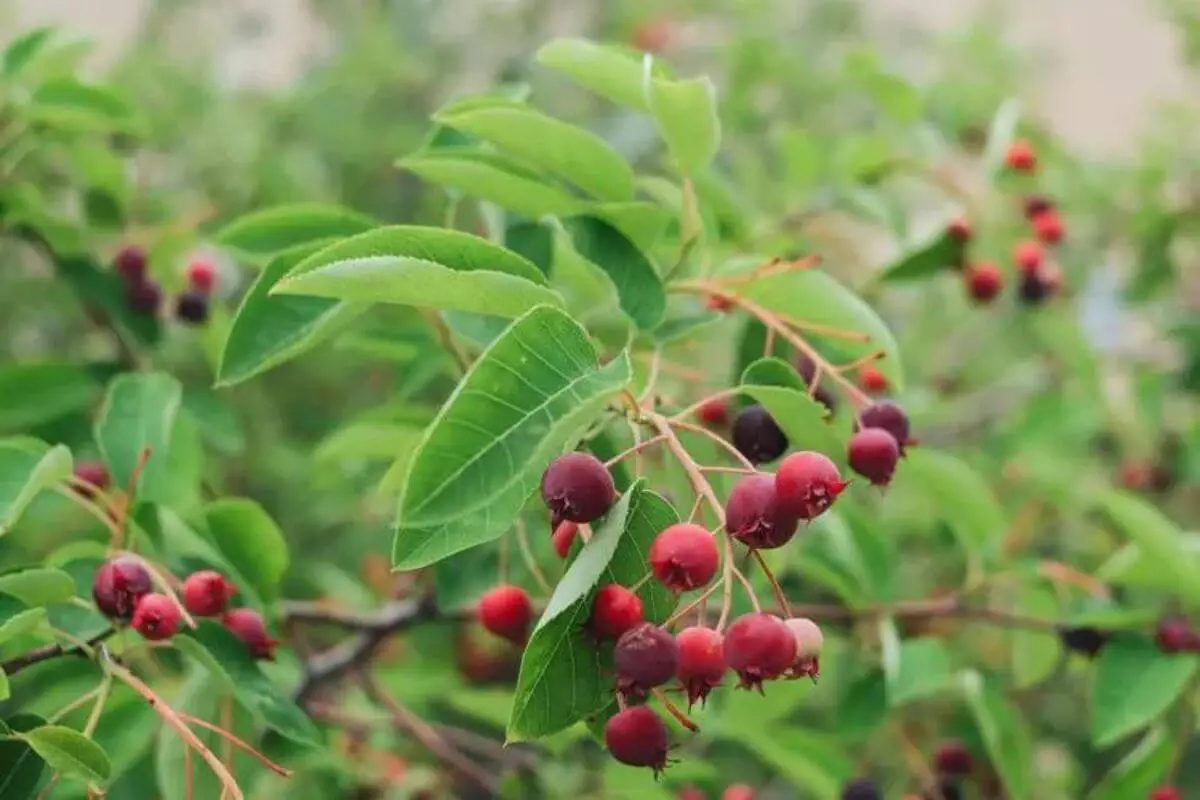When it comes to adding natural beauty and charm to your landscape, the choice between a serviceberry bush and a serviceberry tree can be quite the dilemma. Both options offer stunning foliage, delicate blossoms, and the allure of attracting wildlife. However, they come with distinct characteristics that might influence your decision. In this article, we’ll explore the differences between serviceberry bushes and trees, helping you make an informed choice that aligns with your outdoor vision.
Introduction
Serviceberries, also known as Amelanchier, are beloved for their spring blossoms, vibrant fall colors, and edible berries. They come in two main forms: bushes and trees. Each type has its own unique qualities that can contribute to the overall look and feel of your outdoor space.
The Allure of Serviceberries
Serviceberries are known for their delicate white blossoms that grace the landscape in early spring, often before many other plants have awakened from their winter slumber. These blossoms not only add beauty but also attract pollinators like bees and butterflies, supporting the ecosystem in your garden.
The Versatility of Serviceberry Bushes
Compact Size and Easy Maintenance
Serviceberry bushes, also referred to as shrubs, are an excellent choice for smaller landscapes or areas where space is limited. They typically grow to be around 3 to 10 feet tall, making them easy to manage and incorporate into various garden designs. Their compact size also allows them to be used as hedges or foundation plantings.
Blossoms and Berries
Serviceberry bushes produce delicate blossoms that transform into small, round berries. These berries are not only visually appealing but are also edible and can be used in jams, pies, and other culinary creations. They attract a variety of birds, adding a touch of life and movement to your garden.
The Majesty of Serviceberry Trees
Height and Impact
Serviceberry trees, as the name suggests, grow taller than bushes. They can reach heights of 15 to 40 feet or even more, depending on the species and growing conditions. This vertical element can add depth and visual interest to your landscape, especially when strategically placed.
A Focal Point in the Landscape
Serviceberry trees can serve as striking focal points in larger landscapes. Their height and graceful branching structure can create a sense of elegance, drawing the eye upward and providing shade beneath their canopy. The trees’ fall foliage, which often turns shades of orange and red, adds a stunning display of color.
Factors to Consider
Available Space
Before deciding between a serviceberry bush and a tree, consider the size of your outdoor space. If you have a smaller garden or limited area, a bush might be more suitable. For larger properties, a serviceberry tree could complement the space effectively.
Desired Aesthetic
Think about the overall aesthetic you want to achieve. If you’re aiming for a compact and well-manicured garden, a serviceberry bush can contribute to that look. On the other hand, if you’re looking to create a focal point or add vertical interest, a tree might be the way to go.
Maintenance Efforts
Serviceberry bushes generally require less maintenance due to their smaller size. However, both bushes and trees benefit from regular pruning to promote healthy growth and shape. Consider your willingness and ability to invest time in maintenance tasks when making your decision.
Making the Decision
Ultimately, the choice between a serviceberry bush and a tree boils down to your personal preferences and the specific needs of your landscape. Both options offer unique benefits and can contribute to the beauty of your outdoor space in their own way.

Conclusion
Whether you opt for the charming simplicity of a serviceberry bush or the majestic presence of a tree, incorporating serviceberries into your landscape design is a choice that won’t disappoint. These plants bring a touch of nature’s elegance and a pop of color to your surroundings while attracting wildlife and enhancing the overall appeal of your outdoor haven.
FAQs
Can I eat the berries from both serviceberry bushes and trees?
Yes, both serviceberry bushes and trees produce edible berries that are not only attractive to birds but also suitable for human consumption.
Do serviceberries require a lot of sunlight?
Serviceberries thrive in full sun to partial shade, making them adaptable to a range of lighting conditions.
Can I plant a serviceberry tree close to my house?
While serviceberry trees can be planted near houses, it’s important to consider their mature height and proximity to structures to avoid potential issues in the future.
How do I prune a serviceberry bush or tree?
Prune serviceberries during the dormant season to remove dead or diseased branches and shape the plant. Be sure to use proper pruning techniques to encourage healthy growth.
Do serviceberries attract any pests?
Serviceberries are relatively pest-resistant, but like any plant, they can encounter occasional insect issues. Regular monitoring and proper care can help prevent major pest problems.



